-
收藏模板
- 模板信息
- 更新时间:2023-09-24
- 字数:约12791字
- 页数:约7页
- 格式:.docx
- 推荐版本:Office2016及以上版本
- 售价:5 金币
您可能喜欢的文档
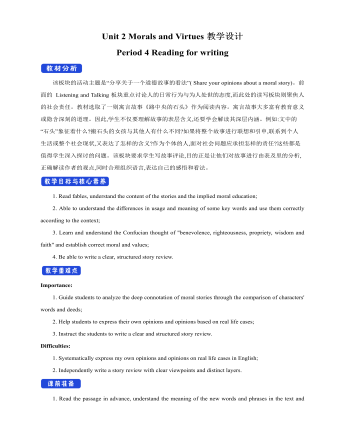
新人教版高中英语必修3Unit 2 Morals and Virtues教学设计四
3.Teachers ask different groups to report the answers to the questions and ask them to try different sentence patterns.The teacher added some sentence patterns for students to refer to when writing.Step 4 Writing taskActivity 51.Write the first draft.Students first review the evaluation criteria in activity 5, and then independently complete the draft according to the outline of activity 4, the answers to the questions listed in the group discussion and report, and the reference sentence pattern.2.Change partners.The teacher guides the students to evaluate their partner's composition according to the checklist of activity 5 and proposes Suggestions for modification.3.Finalize the draft.Based on the peer evaluation, students revise their own compositions and determine the final draft.Finally, through group recommendation, the teacher selects excellent compositions for projection display or reading aloud in class, and gives comments and Suggestions.Step 5 Showing writingActivity 5T call some Ss to share their writing.Step 6 Homework1. Read the passage in this section to better understand the passage.2. Carefully understand the hierarchical structure of the article, and deeply understand the plot of the story according to the causes, process and results;3. Independently complete the relevant exercises in the guide plan.1、通过本节内容学习,学生是否理解和掌握阅读文本中的新词汇的意义与用法;2、通过本节内容学习,学生能否通过人物言行的对比分析道德故事的深层内涵;3、通过本节内容学习,学生能否根据故事的起因、经过和结果来深入理解故事的情节,从而了解文章的层次结构;4、结合现实生活案例发表自己的见解和看法,写一篇观点明确、层次分明的故事评论。

新人教版高中英语必修3Unit 2 Morals and Virtues教学设计二
Activity 41. Students complete the task of activity 4, then teachers and students check the answers. 2. The teacher organized the students to work together and asked them to use the tables and mind maps sorted out before to retold the important choices in Lin Qiaozhi's life and their resultsStep 5 Language points1. The teacher asks the students to read the text carefully, find out the core words and long and difficult sentences in the text and draw lines, understand the use of vocabulary, and analyze the structure of long and difficult sentences. 2. The teacher explains and summarizes the usage of core vocabulary and asks the students to take notes. 3. The teacher analyzes and explains the long and difficult sentences that the students don't understand, so that the students can understand them better. Step 6 Homework1. Read the text again, in-depth understanding of the text; 2. Master the use of core vocabulary and understand the long and difficult sentences. 3. Complete relevant exercises in the guide plan. 1、通过本节内容学习,学生是否理解和掌握阅读文本中的新词汇的意义与用法;2、通过本节内容学习,学生能否结合文本特点总结林巧稚的人生原则和人格品质特征;3、通过本节内容学习,学生能否针对人生抉择发表自己的看法;能否全面地、客观地、理性地看待问题,进而对道德和人性有更加深入的思考和理解。

新人教版高中英语必修3Unit 2 Morals and Virtues教学设计三
The joke set her crying.这个玩笑使她哭起来。Step 5 ReadingActivity 31. Students read the small text in activity 3. The teacher provides several small questions to check whether students understand the content of the text and the ideographic function of the -ing form in the text.*Where are those people?*Why did Dr Bethune come to China?*How did he help the Chinese people during the war?*What did Chairman Mao Zedong say about him?2. Ss try to rewrite some sentences using the -ing form. Then check the answers. When checking the answers, the teacher can ask different students to read the rewritten sentences and give comments.Answers:1. he became very interested in medicine, deciding to become a doctor.2. …after hearing that many people were dying in the war.3. Helping to organise hospitals, he taught doctors and nurses, and showed people how to give first aid./ He helped to organise hospitals, teaching doctors and nurses, and showing people how to give first aid.4. …praising Dr Bethune as a hero to be remembered in China.Step 6 PracticeActivity 4Students complete grammar activities 2 and 3 on page 69 of the workbook.Step 6 Homework1. Understand and master the functions and usage of the -ing form;2. Finish the other exercises in Using structures.1、通过本节内容学习,学生是否理解和掌握动词-ing形式作宾语补足语语和状语语的功能和意义;2、通过本节内容学习,学生能否正确使用动词-ing形式描述人物的行为、动作及其经历;3、通过本节内容学习,学生能否独立完成练习册和导学案中的相关练习。
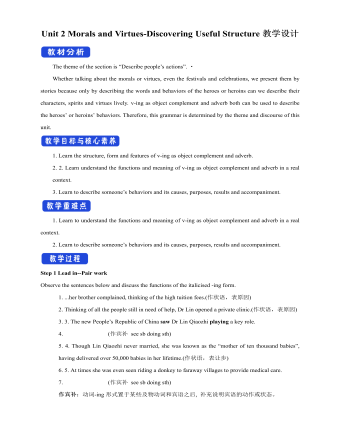
新人教版高中英语必修3Unit 2 Morals and Virtues-Discovering Useful Structure教学设计
1. 表示时间。Hearing these stories, I’m skeptical about the place. = When I heard these stories. . . 2. 表示原因。Not knowing his address, I can’t send this book to him. = Because/Since/As I don’t know his address. . . 3. 表示结果。His father died, leaving him a lot of money. =. . . and left him a lot of money4. 表示条件。Going straight down the road, you will find the department store. = If you go straight down the road. . . 5. 表示让步。Being tired, they went on working. =Although they were tired. . . 6. 表示行为方式、伴随情况或补充说明。He lay on the grass, staring at the sky for a long time. =. . . and stared at the sky for a long time注意:非谓语动词作状语时, 如所提供的动词不能和句子中的主语保持一致, 动词-ing形式必须有自己的逻辑主语, 通常由名词或代词来担任, 这就是独立主格结构。The last bus having gone, we had to walk home. (having gone的逻辑主语是the last bus, 而不是we)Weather permitting, the football match will be played on Friday. (permitting的逻辑主语是time, 而不是the football match)Step 7 Practice1. ________(study) hard, you are sure to get first prize. 2. People use plastic in their daily life, _______(leave) large amounts of waste. 3. ________(work) hard at your lessons, you are to succeed. 4. The old man, ____________(work) abroad for twenty years, is on the way back to his motherland. 5. ______________(finish) his homework, he was playing on the playground. Answers: 1. Studying 2. leaving 3. Working 4.having worked 5. Having finishedStep 8 HomeworkFinish the homework on Page 22.
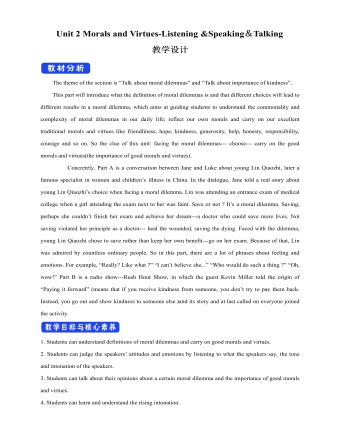
新人教版高中英语必修3Unit 2 Morals and Virtues-Listening &Speaking&Talking教学设计
Example:One day, a poor boy who was trying to pay his way through school by sending newspapers door to door found that he only had one dime(一角)left. He was so hungry that he decided to beg for a meal at the next house.However, he lost his nerve when a lovely young woman opened the door. Instead of a meal he asked for a drink of water. She thought he looked hungry so she brought him a large glass of milk. He drank it slowly, and then asked, “How much do I owe you?” “You don’t owe me anything,” she replied, “Mother has taught me never to accept pay for a kindness.” “Then I thank you from the bottom of my heart.” With these words, Howard Kelly left that house.Years later the woman became badly ill and was finally sent to the hospital in a big city. Dr. Howard Kelly, now famous, was called in. When he heard the name of the town she came from, a strange light filled his eyes. Dressed in his doctor’s clothes, Dr. Kelly went into her room and recognized her at once. From that day on, he gave special attention to her, and decided to do his best to save her life.At last the woman was saved. Dr. Kelly asked the business office to pass the final bill to him. He looked at it and then wrote something on the side. The bill was sent to the woman’s room. She was afraid to open it because she was sure that it would take the rest of her life to pay for it off. Finally she looked, and the note on the side of the bill caught her attention. She read these words: “Paid in full with a glass of milk, Dr. Howard Kelly.” Tear of joy flooded her eyes.
- 查看更多相关Word文档
Unit 2 Morals and virtues教学设计
Period 1 Listening and speaking
本单元的Listening and Speaking板块与后续的 Reading andtalking灰块关系密切,听力内容为后面的阅读内容提供了话题和背景的铺垫。这一板块以“谈论道德困境”(Talkabout moral dilemmas)切入单元主题,介绍了什么是道德困境,探讨了处于道德困境中的人所面临的不同选择和结果,以及选择背后所隐含的道德观和处事原则。探讨这些问题,主要是为了让学生了解和感受道德困境在日常社会生活中的普遍性和复杂性,能够结合自身的体验和生活经验反思与道德困境相关的实际问题,提升辩证思维能力,使其能够更加全面客观地观察和看待社会现象,以理性的态度认识世界。
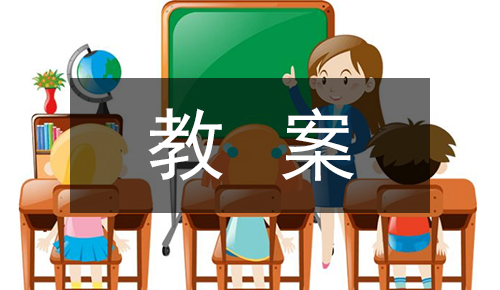
1. Let students learnto observe pictures and describe the moral dilemmas faced by the people in the pictures;
2. Let students correctlyunderstand the definition of "moral dilemma" through listening activities,and realize that moral dilemma exists in everyones real life;
3. Improve studentsskills of "seeing" and "speaking" through listening training,so that students can understand the general idea of listening materials, understandthe attitudes and emotions of the characters in the dialogue, and sort out the acquiredcontent information; guide students to tell stories about good deeds they have experiencedor heard about.
Importance:
1. Help students understandthe definition of "moral dilemma";
2. Guide students tojudge the attitude and mood of the speaker by paying attention to the content, toneand intonation of the speaker.
3. Encourage studentsto express their views and opinions on specific moral dilemmas. Guide students totell stories about good deeds they have experienced or heard about. Guide studentsto tell stories about good deeds they have experienced or heard about.
Difficulties:
1. Ask students tounderstand the general idea of the listening materials and understand the attitudesand emotions of the characters in the dialogue.
2. Let students expresstheir views and opinions on specific moral dilemmas.
3.Guide students totell stories about good deeds they have experienced or heard about.
1. Before class, studentsobserve the pictures in the textbook, discuss with each other the scenes shown inthe pictures, speculate on the psychology of the characters, and describe the psychologicalactivities of the boys;
2. Ask students todiscuss the situation in the picture, imagine the possible results of helping theelderly, and let students express their own opinions and reasons;
3. Correctly understandthe definition of "moral dilemma" in combination with the exercises inthe guidance plan.
Step 1 Lead-in
1. Students observe thetopic picture. The teacher first guides the students to talk about and describethe topic map, and then combines the problems in the Look and discuss to inspirethe students to think about the following questions:
①What do you think the teenagers are doing?
②Can you list some virtues that are admired in every culture?
2. Then teacher asks again:“What qualities and personalities do you think are the mostimportant when people are doing teamwork? ”and Get the students to brainstorma list of nouns and adjectives related to quality, such as: generosity,friendship,hope,giving,kindness,caring,thankfulness,helpfulness,trust, responsibility, etc.
3. Appreciate famous quotes.The students read the quotation on the opening page. The teacher asks:
①How do you understand the quote?
②Can you translate it into Chinese?
Answer: 一个好人一生最好的部分,是他细小的、无名的、不被人记得的出于善良和爱的行为。
4. The teacher adds somefamous sayings about should or should. Let the students say what they mean and expresstheir understanding.
*The best way to find yourself is to lose yourselfin the service of others. ——Mahatma Gandhi
*The superior man thinks always of virtue;the common man thinks of comfort. ——Confucius
*Virtue, perhaps,is nothing more than politenessof soul. ——Honore de Balzac
Answers:
发现自己最好的方法就是为他人服务。——圣雄甘地
高尚的人总是想到美德;普通人考虑的是舒适。——孔子
美德也许只不过是心灵上的礼貌。——巴尔扎克
Step 2 Watching and talking
Activity 1
1. Students read the definitionof "moral dilemma" in the picture and observe the picture. On the basisof understanding, the scene shown in the picture is described, the psychology ofthe characters is speculated, and the inner activities of the boy are described.The teacher provides some questions for students to discuss:
①What is happening in the picture? Can you use one or two sentences to describethe situation(Who? When? Where? What?)
②What are the two possible choices that the boy could make?
③Could he do both? Why?
④What will happen if he helps the old woman? What may happen if he doesnthelp the old woman?
⑤If you were the boy, what should you do and what would you do?
Finally, teacher asksa question to guide students to understand the meaning of the virtue dilemma.
If everyone is worriedabout the price of helping others, what will happen?
2. Teacher asks severalstudents to describe the picture and get them to discuss the second question. Guidestudents to understand the virtue dilemma in a positive way.
Step 3 Listening
Activity 2
1. Students browsethe form in activity 2, predict the listening content, and fill in the answers accordingto the guesses.
2. Check the answerswith class: a famous medical university; finish the exam; stop and help the girl;She will get into medical university, the girl might not get the help she needs;She can put the needs of the other person first, give up her chance to get intothe medical university
Activity 3
1.Read the tasks inactivity 3 and understand the sentences. The teacher instructs the students to readthe listening strategies carefully, and then asks the students to predict or imaginethe possible expression patterns, rhythm, tone and intonation of the relevant peoplebased on the content of the five sentences listed and the attitudes of the people.Ask the students to imagine the following questions and let them act out a reasonableresponse.
●Imagine you are eagerto share a piece of news or an interesting story with your friend. What would youdo or what would you say?
●If you are doubtfulabout your friend’s words, what expressions would you use?
●How would you expressyour admiration for someone?
●What would you sayif you don’t believe something is true?
●What would you saywhen you are curious about the development of a story?
2.Students listen tothe tape again and pay attention to the attitudes expressed by the two characters.Complete the Activity 3.
3.The teacher playsfor the third time, remind the students to record the expressions and key wordsof the two characters and mark the relevant pronunciation and intonation, to finda reasonable reason and basis for their own judgment.
4.Then the studentscheck the answers. When the students provide the answers, they must state the reasonsfor their judgment.(Answers: 1.T 2.T 3.T 4.T 5.F)
Activity 4
1.Look at the questionsin activity 4 to learn the key information you need to hear. Then listen to thetape with the questions for the fourth time and record the key words as you listen.When the teacher and students check the answers, the teacher can remind the studentsto connect the key words they recorded into sentences, and then answer the questionsin complete sentences fluently.
Suggested Answers:
①She carried the student to a safe place and looked after her. Then she wentto the hospital with the student and called her sister.
②Her name was Lin Qiaozhi. She later became a great doctor. She was famousfor caring for tens of thousands of women and their babies.
③Her life was full of hard choices but she didn’t let them stop her from takingcare of people who were in need. She always cared for others more than for herself.
2.Lets listen to thetape and read after the speaker.
Step 4 Speaking
Activity 5
1.The teacher organizes students to make up small dialogues in pairs. Teacher can ask a few studentsto have an impromptu conversation with themselves first, for the class to demonstrate.E.g.
T: If you were faced with a similar situation,what would you do?
S: I think I would choose to help the studentbecause life matters most.
T: So you would do as Lin Qiaozhi did. Thatsreally admirable.
Teachers can also putforward some extended questions to give students the space to think, express andplay. Such as:
●Apart from helpingthe student and finishing the exam, is there a third choice? Can you think of betterways to handle the dilemma?
●Are you sure you knowhow to help the student who fainted?o What kind of help could you offer?
●Do you think it wouldbe better for a professional doctor to care for the patient?
●What do you thinkof the people who stand by when such accidents happen? Do you think they are indifferentor not kind to others?
2.Students discussin groups and then present the dialogue to the class. For students to make the choice,the teacher should give the evaluation in time, guide the students to maintain apositive, optimistic, friendly, mutual attitude towards life. Teachers can alsoadd some expressions for students reference:
●In my opinion/view…
● Generally speaking,…
●Personally, I donthave the faintest idea about…
●To my mind…
●Id just like to say…
●As far as Im concerned…
●To be honest/frank…
● If you ask me…
Step 5 Expansion and practice
1. Read and complete thepassage with correct words.
Jane is sharing an article about moral dilemmaswith her friend Luke. This article mentions a girl t_____ the entrance exam fora famous medical university in Beijing. During the exam, the student next to her_____.The girl stopped to help the student, t_____ that it was better to p____ the needsof the other person f_____. Although the girl l_____ the exam that day, she becamea great doctor. Her name was Lin Qiaozhi, who was famous for c_____for tens of thousandsof women and their babies in China.
2.Check the answerswith class. (Answers: taking, fainted, thinking,put,first,left, caring)
Step 6 Pronunciation
1. The teacher playsthe tape. The students match the three dialogues in activity 1 with the three functionsof rising key listed in the box on the right according to the sentence meaning andcontext. Teachers and students check the answers.
2. The teacher organizesgroup discussions and asks the students to fill in the dialogue according to theirimagination. After the discussion, the teacher asked different groups to act outthe dialogues.
3.Mark,listen and read.
(1) Students read thedialogue in activity 2 in pairs and mark the place where the rising key should beused.
(2) Students discusswith their partners, check each others marks, and try to read the dialogue aloud.
(3) The teacher playsthe recording of activity 2, and the students check whether the rising key theymarked is correct. Teachers and students check the answers and ask several studentsto explain the meaning of each rising tone.
(4) The teacher playsthe tape again. The students listen to the tape and follow the conversation.
(5) Students practicedialogue with their partners to further feel the meaning and function expressedby each rising tone.
Step 7 Listening andtalking
Activity 1 Listening understanding
(1) Students can browsethe three questions in activity 1 to understand what they need to hear. Play thetape and students complete activity 1.
(2) Students read theshort passage in activity 2, get the gist of the story and try to pre-fill in theinformation.
(3)Listen and fillin the blanks. T: lets listen to the tape again. Teachers and students check theanswers.
(4) Listen to the passageand find out the words (such as cohesion) or sentence patterns that can be usedto tell the story.
Activity 2 Oral expression
转载请注明出处!本文地址:
https://www.lfppt.com/worddetails_46455619.html最新课件教案文档
-

精选高中生期末评语
1、该生学习态度端正 ,能够积极配合老师 ,善于调动课堂气氛。 能够积极完成老师布置的任务。学习劲头足,听课又专注 ,做事更认 真 ,你是同学们学习的榜样。但是,成绩只代表昨天,并不能说明你 明天就一定也很优秀。所以,每个人都应该把成绩当作自己腾飞的起 点。2、 你不爱说话 ,但勤奋好学,诚实可爱;你做事踏实、认真、为 人忠厚 ,是一个品行端正、有上进心、有良好的道德修养的好学生。在学习上,积极、主动,能按时完成老师布置的作业,经过努力 ,各 科成绩都有明显进步,你有较强的思维能力和学习领悟力,学习也有 计划性,但在老师看来,你的潜力还没有完全发挥出来,学习上还要有持久的恒心和顽强的毅力。
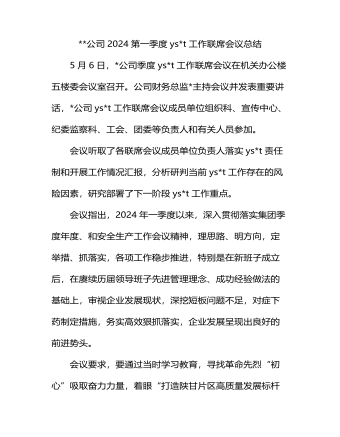
公司2024第一季度意识形态工作联席会议总结
一是要把好正确导向。严格落实主体责任,逐条逐项细化任务,层层传导压力。要抓实思想引领,把理论学习贯穿始终,全身心投入主题教育当中;把理论学习、调查研究、推动发展、检视整改等有机融合、一体推进;坚持学思用贯通、知信行统一,努力在以学铸魂、以学增智、以学正风、以学促干方面取得实实在在的成效。更加深刻领会到******主义思想的科学体系、核心要义、实践要求,进一步坚定了理想信念,锤炼了政治品格,增强了工作本领,要自觉运用的创新理论研究新情况、解决新问题,为西北矿业高质量发展作出贡献。二是要加强应急处事能力。认真组织开展好各类理论宣讲和文化活动,发挥好基层ys*t阵地作用,加强分析预警和应对处置能力,提高发现力、研判力、处置力,起到稳定和引导作用。要坚决唱响主旋律,为“打造陕甘片区高质量发展标杆矿井”、建设“七个一流”能源集团和“精优智特”新淄矿营造良好的舆论氛围。三是加强舆情的搜集及应对。加强职工群众热点问题的舆论引导,做好舆情的收集、分析和研判,把握时、度、效,重视网上和网下舆情应对。
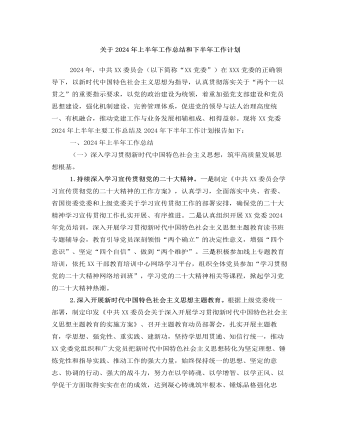
关于2024年上半年工作总结和下半年工作计划
二是深耕意识形态。加强意识形态、网络舆论阵地建设和管理,把握重大时间节点,科学分析研判意识形态领域情况,旗帜鲜明反对和抵制各种错误观点,有效防范处置风险隐患。积极响应和高效落实上级党委的决策部署,确保执行不偏向、不变通、不走样。(二)全面深化党的组织建设,锻造坚强有力的基层党组织。一是提高基层党组织建设力量。压实党建责任,从政治高度检视分析党建工作短板弱项,有针对性提出改进工作的思路和办法。持续优化党建考核评价体系。二是纵深推进基层党建,打造坚强战斗堡垒。创新实施党建工作模式,继续打造党建品牌,抓实“五强五化”党组织创建,广泛开展党员教育学习活动,以实际行动推动党建工作和经营发展目标同向、部署同步、工作同力。三是加强高素质专业化党员队伍管理。配齐配强支部党务工作者,把党务工作岗位作为培养锻炼干部的重要平台。
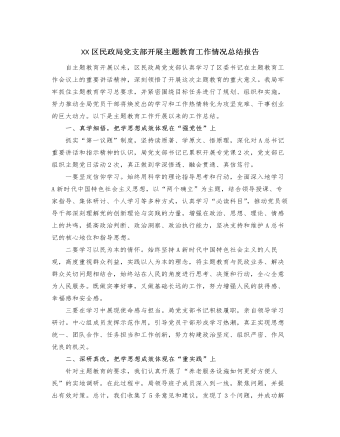
XX区民政局党支部开展主题教育工作情况总结报告
二要专注于解决问题。根据市委促进经济转型的总要求,聚焦“四个经济”和“双中心”的建设,深入了解基层科技工作、学术交流、组织建设等方面的实际情况,全面了解群众的真实需求,解决相关问题,并针对科技工作中存在的问题,采取实际措施,推动问题的实际解决。三要专注于急难愁盼问题。优化“民声热线”,推动解决一系列基层民生问题,努力将“民声热线”打造成主题教育的关键工具和展示平台。目前,“民声热线”已回应了群众的8个政策问题,并成功解决其中7个问题,真正使人民群众感受到了实质性的变化和效果。接下来,我局将继续深入学习主题教育的精神,借鉴其他单位的优秀经验和方法,以更高的要求、更严格的纪律、更实际的措施和更好的成果,不断深化主题教育的实施,展现新的风貌和活力。
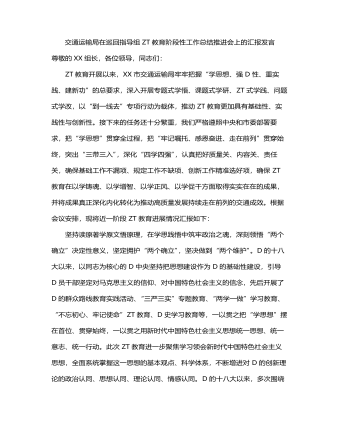
交通运输局在巡回指导组主题教育阶段性工作总结推进会上的汇报发言
今年3月,市政府出台《关于加快打造更具特色的“水运XX”的意见》,提出到2025年,“苏南运河全线达到准二级,实现2000吨级舶全天候畅行”。作为“水运XX”建设首战,谏壁闸一线闸扩容工程开工在即,但项目开工前还有许多实际问题亟需解决。结合“到一线去”专项行动,我们深入到谏壁闸一线,详细了解工程前期进展,实地察看谏壁闸周边环境和舶通航情况,不断完善施工设计方案。牢牢把握高质量发展这个首要任务,在学思践悟中开创建功之业,坚定扛起“走在前、挑大梁、多做贡献”的交通责任,奋力推动交通运输高质量发展持续走在前列。以学促干建新功,关键在推动高质量发展持续走在前列。新时代中国特色社会主义思想着重强调立足新发展阶段、贯彻新发展理念、构建新发展格局,推动高质量发展,提出了新发展阶段我国经济高质量发展要坚持的主线、重大战略目标、工作总基调和方法论等,深刻体现了这一思想的重要实践价值。
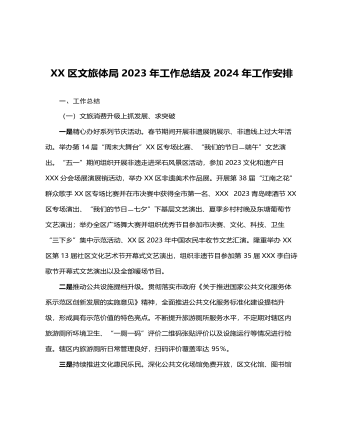
XX区文旅体局2023年工作总结 及2024年工作安排
三、2024年工作计划一是完善基层公共文化服务管理标准化模式,持续在公共文化服务精准化上探索创新,围绕群众需求,不断调整公共文化服务内容和形式,提升群众满意度。推进乡镇(街道)“114861”工程和农村文化“121616”工程,加大已开展活动的上传力度,确保年度目标任务按时保质保量完成。服务“双减”政策,持续做好校外培训机构审批工作,结合我区工作实际和文旅资源优势,进一步丰富我市义务教育阶段学生“双减”后的课外文化生活,推动“双减”政策走深走实。二是结合文旅产业融合发展示范区,全力推进全域旅游示范区创建,严格按照《国家全域旅游示范区验收标准》要求,极推动旅游产品全域布局、旅游要素全域配置、旅游设施全域优化、旅游产业全域覆盖。
今日更新Word
-

精选高中生期末评语
1、该生学习态度端正 ,能够积极配合老师 ,善于调动课堂气氛。 能够积极完成老师布置的任务。学习劲头足,听课又专注 ,做事更认 真 ,你是同学们学习的榜样。但是,成绩只代表昨天,并不能说明你 明天就一定也很优秀。所以,每个人都应该把成绩当作自己腾飞的起 点。2、 你不爱说话 ,但勤奋好学,诚实可爱;你做事踏实、认真、为 人忠厚 ,是一个品行端正、有上进心、有良好的道德修养的好学生。在学习上,积极、主动,能按时完成老师布置的作业,经过努力 ,各 科成绩都有明显进步,你有较强的思维能力和学习领悟力,学习也有 计划性,但在老师看来,你的潜力还没有完全发挥出来,学习上还要有持久的恒心和顽强的毅力。
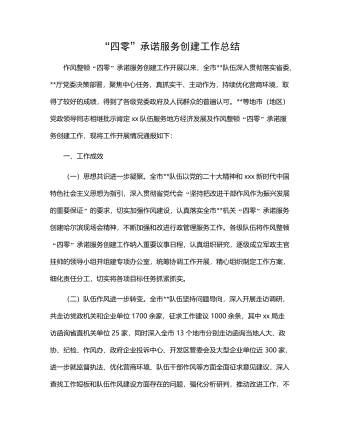
“四零”承诺服务创建工作总结
(二)坚持问题导向,持续改进工作。要继续在提高工作效率和服务质量上下功夫,积极学习借鉴其他部门及xx关于“四零”承诺服务创建工作的先进经验,同时主动查找并着力解决困扰企业和群众办事创业的难点问题。要进一步探索创新,继续优化工作流程,精简审批程序,缩短办事路径,压缩办理时限,深化政务公开,努力为企业当好“保姆”,为群众提供便利,不断适应新时代人民群众对政务服务的新需求。(三)深化内外宣传,树立良好形象。要深入挖掘并及时总结作风整顿“四零”承诺服务创建工作中形成的典型经验做法,进一步强化内部宣传与工作交流,推动全市创建工作质效整体提升。要面向社会和公众庄严承诺并积极践诺,主动接受监督,同时要依托电台、电视台、报纸及微信、微博等各类媒体大力宣传xx队伍作风整顿“四零”承诺服务创建工作成果,不断扩大社会知情面和群众知晓率。
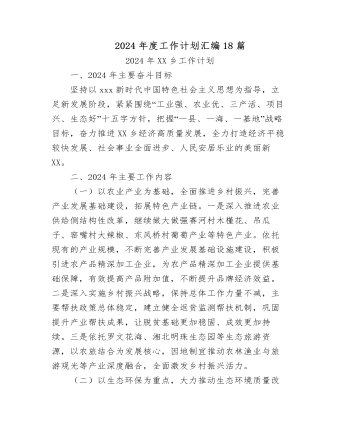
2024年度工作计划汇编(18篇)
1.市政基础设施项目5项,总建设里程2.13km,投资概算2.28亿元。其中,烔炀大道(涉铁)工程施工单位已进场,项目部基本建成,正在办理临时用地、用电及用水等相关工作;中铁佰和佰乐(巢湖)二期10KV外线工程已签订施工合同;黄麓镇健康路、纬四路新建工程均已完成清单初稿编制,亟需黄麓镇完成图审工作和健康路新建工程的前期证件办理;公安学院配套道路项目在黄麓镇完成围墙建设后即可进场施工。2.公益性建设项目6项,总建筑面积15.62万㎡,投资概算10.41亿元。其中,居巢区职业教育中心新建工程、巢湖市世纪新都小学扩建工程已完成施工、监理招标挂网,2月上旬完成全部招标工作;合肥职业技术学院大维修三期已完成招标工作,近期签订施工合同后组织进场施工;半汤疗养院净化和医用气体工程已完成招标工作;半汤疗养院智能化工程因投诉暂时中止;巢湖市中医院(中西医结合医院)新建工程正在按照既定计划推进,预计4月中下旬挂网招标。
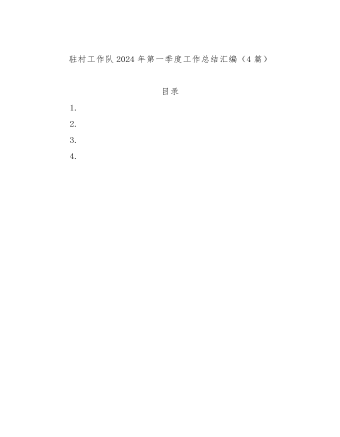
驻村工作队2024年第一季度工作总结汇编(4篇)
三是做大做强海产品自主品牌。工作队于xx年指导成立的冬松村海产品合作社,通过与消费帮扶平台合作,在工作队各派出单位、社会团体、个人支持下,已获得逾xx万元销售额。2022年底工作队推动合作社海产品加工点扩建的工作方案已获批,待资金下拨后将正式启动扩建工作。四是积极助企纾困,带动群众增收致富。工作队利用去年建立的xx镇产业发展工作群,收集本地企业在产品销售、技术、人力、资金、运营、用地等方面的需求,并加大xx支持乡村振兴力度,xx助理赴各村委开展多场xx政策支持乡村振兴宣讲活动,本季度有x万元助农贷款获批,xx万贷款正在审批中。在壮大既有产业的同时,完善联农带农机制,一方面鼓励企业雇用本地农户就业,另一方面计划与本地农户签订长期收购合同,让农民种得放心、种得安心,带动当地群众共同致富。

主题教育总结常用提纲大全
第一,主题教育是一次思想作风的深刻洗礼,初心传统进一步得到回归。第二,主题教育是一次沉疴积弊的集中清扫,突出问题进一步得到整治。第三,主题教育是一次强化为民服务的生动实践,赤子之情进一步得到提振。第四,主题教育是一次激发创业担当的有利契机,发展层次进一步得到提升。2.第一,必须提领思想、武装思想。第二,必须聚焦问题、由表及里。第三,必须领导带头、以上率下。第四,必须务实求实、认真较真。3.一是抬高政治站位,坚持大事大抓。二是坚持思想领先,狠抓学习教育。三是突出问题导向,深入整改纠治。四是坚持领导带头,发挥表率作用。4.一是立足“早”字抓筹划。二是着眼“活”字抓学习。三是围绕“统”字抓协调。5.一是形势所需。二是任务所系。三是职责所在。四是制度所定。6.一要提升认识。二要积极作为。三要密切协作。
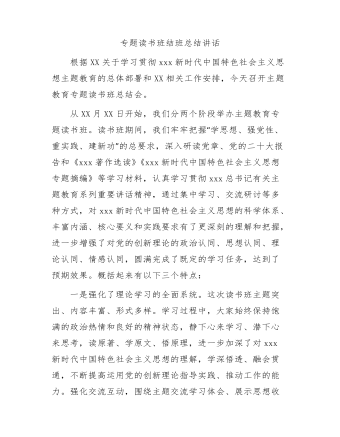
主题教育专题读书班结班总结讲话
第二,要把调查研究贯穿始终,实干担当促进发展。开展好“察实情、出实招”“破难题、促发展”“办实事、解民忧”专项行动,以强化理论学习指导发展实践,以深化调查研究推动解决发展难题。领导班子成员要每人牵头XX个课题开展调查研究,XX月底前召开调研成果交流会,集思广益研究对策措施。各部门、各单位要制定调研计划,通过座谈访谈、问卷调查、统计分析等方式开展调查研究,解决工作实际问题,帮助基层单位和客户解决实际困难。第三,要把检视问题贯穿始终,廉洁奉公树立新风。认真落实公司主题教育整改整治工作方案要求,坚持边学习、边对照、边检视、边整改,对标对表xxx新时代中国特色社会主义思想,深入查摆不足,系统梳理调查研究发现的问题、推动发展遇到的问题、群众反映强烈的问题,结合巡视巡察、审计和内外部监督检查发现的问题,形成问题清单。

















